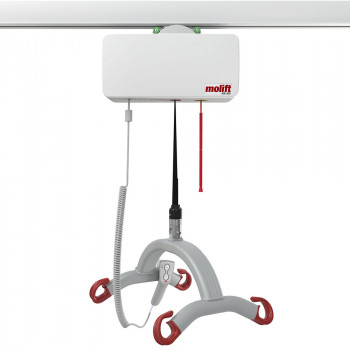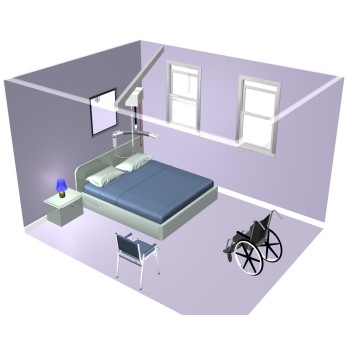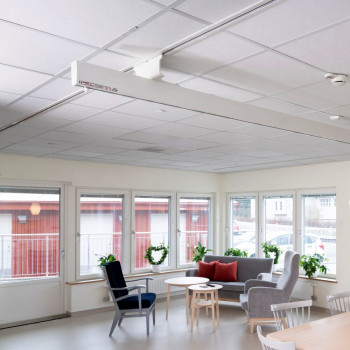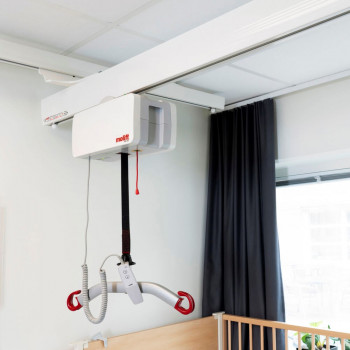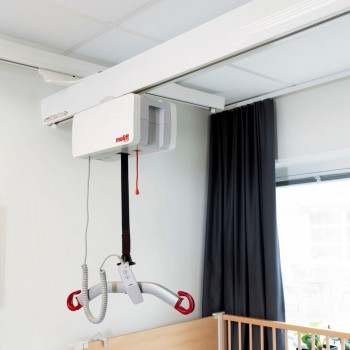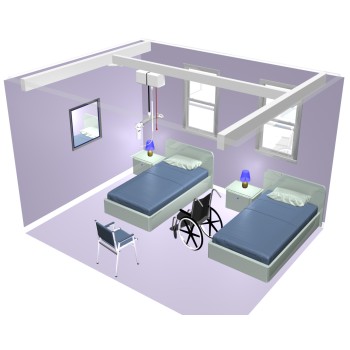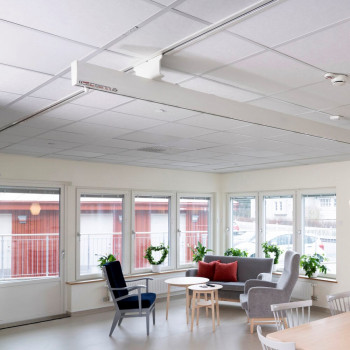Ceiling track for picking you off the floor
-1140x300.jpg)
Falls are among the most common and serious health risks, particularly for older adults and individuals with mobility impairments. Whether in a hospital, care home, or private residence, the ability to safely and efficiently assist someone who has fallen is critical. Enter the ceiling track hoist system—a transformative solution that offers a dignified, safe, and effective way to lift individuals from the floor without strain or risk to caregivers.
This blog explores the features, benefits, and real-world applications of ceiling track hoists specifically designed for floor recovery, and why they are becoming a standard in modern care environments.
1. The Challenge of Floor Recovery
Falls can happen anywhere—at home, in a hospital, or a care facility. The aftermath of a fall presents several challenges:
- Physical injury to the individual
- Emotional distress and embarrassment
- Risk of further harm during manual lifting
- Strain and injury to caregivers
Traditional methods of lifting someone from the floor often involve multiple caregivers, manual handling, and significant physical effort. These methods can be unsafe and undignified. Ceiling track hoists offer a better way.
Here is an example of how to be lifted off the floor using a mobile a Molift Quattro gantry solution, however, the principle is the same when using a ceiling track hoist.
2. What Is a Ceiling Track Hoist?
A ceiling track hoist is a mechanical lifting system mounted to the ceiling, designed to lift and transfer individuals using a motorized hoist and sling. For floor recovery, the system is configured to reach low enough to safely lift someone from a lying or seated position on the floor.
Key Components:
- Ceiling-mounted track (straight or XY/gantry)
- Motorized hoist unit
- Lifting sling or cradle
- Remote or wall-mounted controls
- Low-lift capability for floor-level access
3. Features of Ceiling Track Hoists for Floor Recovery
- Low-Lift Capability: These hoists are engineered to lower the sling to the floor, enabling safe and easy access to individuals who have fallen.
- Full-Room Coverage: With XY (gantry) track systems, the hoist can move in any direction, allowing caregivers to reach the fallen person wherever they are in the room.
- Motorized Operation: Electric motors provide smooth, controlled lifting and lowering, reducing the risk of sudden movements or jerks.
- Emergency Stop and Safety Locks: Built-in safety features ensure the hoist can be stopped immediately in the event of an emergency, and locks prevent accidental movement.
- Battery Backup: In the event of a power outage, battery-powered operation ensures the hoist remains operational.
- Compact and Discreet Design: Modern ceiling hoists are designed to blend into the environment, with sleek tracks and quiet motors.
4. Benefits of Ceiling Track Hoists for Picking You Off the Floor
- Safety for the Individual: The hoist provides a stable, secure lift that minimizes the risk of further injury.
- Safety for the Caregiver: Ceiling hoists eliminate the need for physical lifting, protecting caregivers from back injuries and fatigue.
- Dignity and Comfort: A ceiling hoist offers a more private, respectful experience, preserving the individual’s dignity.
- Single-Operator Use: Many systems are designed to be operated by a single caregiver, improving efficiency and reducing staffing needs.
- Quick Response: Ceiling hoists allow for a fast, safe response without waiting for additional help or equipment.
- Versatility: These systems can be used not only for floor recovery but also for transfers to beds, chairs, toilets, and showers.
5. Ideal Settings for Ceiling Track Hoists
- Private Homes
- Care Homes and Assisted Living
- Hospitals and Rehabilitation Centers
- Emergency Response Units
6. How It Works: Step-by-Step Floor Recovery
- Assess the Situation
- Position the Sling
- Attach to the Hoist
- Lift Gently
- Transfer or Seat
7. Comparing Ceiling Hoists to Other Lifting Methods
| Method | Pros | Cons |
|---|---|---|
| Ceiling Track Hoist | Safe, dignified, single-operator, no floor space needed | Higher initial cost, requires installation |
| Mobile Hoist | Portable, no ceiling installation | Bulky, requires storage, often needs two operators |
| Manual Lift | No equipment needed | High risk of injury, undignified, not recommended |
| Inflatable Lifting Cushions | Portable, gentle | Requires setup time, may not work in all scenarios |
8. Installation Considerations
- Structural Support
- Track Layout
- Power Supply
- Professional Installation
- FREE Ceiling Track Survey Request form can be found by clicking here...
9. Training and Maintenance
- User Training
- Regular Maintenance: Request a LOLER Service via our Request form, cLICK here...
- Cleaning and Hygiene
10. Real-Life Impact: Stories from Users
Case 1: Margaret, 78, lives alone and has a ceiling hoist installed in her bedroom and bathroom. After a fall in the night, she was able to use a pendant control to lift herself safely into bed. “It gave me back my independence,” she says.
Case 2: A care home in Manchester installed ceiling hoists in all resident rooms. Staff reported a 60% reduction in lifting-related injuries and improved morale.
11. Cost and Return on Investment
While ceiling hoists require an upfront investment, the long-term savings are significant:
- Reduced staff injuries and sick leave
- Lower insurance premiums
- Improved staff retention
- Fewer emergency call-outs
- Extended independence for users
12. Future Innovations
- Smart sensors
- Voice-activated controls
- Integration with home automation systems
- Remote monitoring
Conclusion
Ceiling track hoists for floor recovery are more than just assistive devices—they are life-changing tools that promote safety, dignity, and independence. Whether you're a caregiver, a healthcare provider, or someone living with mobility challenges, this technology offers a reliable and respectful solution to one of the most common and dangerous situations: falling and being unable to get up.


